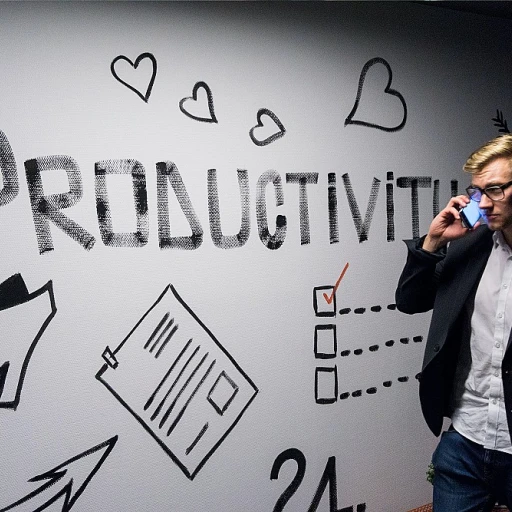The Shift in Work Culture: A New Dawn
The Evolution of Work: Embracing the Transition
The landscape of work has been continuously evolving, but the recent changes have marked a distinct shift in the way we perceive our professional lives. Driven by globalization, technological advancements, and unforeseen challenges such as the pandemic, our work culture is undergoing a transformation like no other. This new dawn brings with it both opportunities and challenges as organizations and individuals learn to adapt.
One of the most significant factors contributing to this shift is the widespread adoption of flexible work arrangements. The traditional nine-to-five office job, once a cornerstone of work culture, is giving way to more adaptable models. As remote work gains traction, questions arise about its permanence in the long-term picture. The focus on how to master the art of leading a remote team plays a pivotal role in how organizations navigate these uncharted waters from a leadership perspective.
While remote work offers numerous benefits, it also brings its own set of challenges. Companies are focusing on crafting hybrid work environments that attempt to blend the best of both worlds, allowing for the flexibility of remote work while maintaining the collaborative spirit of traditional office settings. This balance will require innovative leadership and a strong understanding of the role technology and AI play in facilitating this shift.
As we navigate these changes, it’s essential to prioritize mental health and maintain a healthy work-life balance. Employers and employees alike must place equal emphasis on individual well-being and productivity. The ability to thrive in this evolving landscape will depend heavily on how leaders embrace these changes and guide their teams through the complexities of the post-pandemic era.
Remote Work: A Permanent Fixture?
The Evolution of Remote Work
The concept of working remotely has rapidly evolved, finding itself at the forefront of modern work culture. Once deemed a short-term necessity during times of global upheaval, remote work has transitioned into a possibly permanent solution for numerous industries. Organizations now view this model not only as a means of crisis management but as a sustainable and strategic approach to business operations.
The key drivers behind the continued adoption of remote work include advancements in digital communication tools and cloud-based technologies, which have removed previous barriers to efficient offsite productivity. Employees are no longer tethered to a physical workspace; instead, they can seamlessly connect and collaborate from virtually anywhere. This flexibility offers significant benefits, from reduced commuting stress to increased time for personal activities, fostering a more balanced lifestyle.
However, the shift to remote work also presents its own set of challenges that need careful handling. Isolation and communication gaps can arise, making it essential for organizations to invest in virtual collaboration tools and foster online workplace communities to maintain team cohesion and morale.
Determining whether remote work will remain a permanent fixture involves navigating both its advantages and potential pitfalls. For a deeper exploration, you can find insights in how
remote work is shaping the future of work.
Hybrid Work Environments: The Best of Both Worlds
Uniting Remote and In-Office Work
In today's rapidly evolving work landscape, many organizations are finding the combination of remote and in-office work to be a powerful solution. This approach, known as a hybrid work environment, is becoming increasingly popular as it offers flexibility not only to employees but also to employers. In essence, it takes the benefits of remote work discussed earlier, such as increased productivity and reduced commute times, and combines them with the advantages of maintaining a physical workspace, which can enhance team collaboration and company culture.
One of the key aspects of hybrid work models is the autonomy it provides to employees, allowing them to choose where and when they're most productive. This flexibility is particularly valuable as it fosters a sense of trust and responsibility within the workforce. However, implementing a successful hybrid model requires thoughtful planning and clear communication to ensure it meets both the organization's and employees' expectations.
Technology plays a vital role in supporting these hybrid environments by facilitating seamless communication and collaboration. Tools like video conferencing, shared digital workspaces, and project management software are integral in bridging the gap between remote and in-office teams, ensuring everyone remains connected and engaged regardless of their location.
Moreover, hybrid models can contribute significantly to employee satisfaction and retention. The option to work from home part-time can help individuals balance professional and personal responsibilities more efficiently, contributing to enhanced mental health and work-life balance. Organizations, in turn, benefit from a more motivated and committed workforce.
As we continue to navigate this new era of work, businesses are increasingly recognizing the need for adaptability and innovation. Embracing the strengths of both remote and in-office settings allows for a dynamic work culture that is poised for success in the future. To explore more about how the gig economy is influencing these shifts in work practices, check out the insights on
exploring the shifts in the gig economy.
The Role of Technology and AI in Shaping Work
Exploring the Impact of Technological Advancements on the Workplace
In the rapidly evolving landscape of work culture, technology and artificial intelligence (AI) are at the forefront of this transformation, revolutionizing how businesses operate and employees interact. These advancements are not mere tools facilitating tasks; they are reshaping entire work environments, affecting where, when, and how we work.
Technological innovations are breaking down geographical barriers, enabling a seamless transition to remote work, which we touched upon earlier. With powerful collaboration platforms and communication tools, virtual meetings have become the norm, significantly reducing the need for physical co-location and allowing global teams to operate more efficiently. For further insights into how hybrid work environments are offering the best of both worlds, it's crucial to understand the integration of technology in these settings.
AI's role cannot be overstated, as it is increasingly being leveraged to handle repetitive and mundane tasks, allowing employees to focus on more complex and creative aspects of their roles. Intelligent systems are being used to predict trends, manage workflows, and even aid in decision-making processes, enhancing productivity and driving innovation across various sectors.
As businesses continue to adopt these advanced technologies, there's a growing emphasis on the ethical implications and the need for new skills. Employees must adapt to new tools and learn to work alongside AI, raising the importance of continuous learning and upskilling. Organizations are investing in training programs to ensure their workforce can effectively embrace these technological changes.
Ultimately, technology and AI are not just reshaping tasks but are influencing a broader cultural shift in workplaces, pushing the boundaries of what is possible and challenging traditional work norms. As leaders chart this new territory, they must balance these innovations with human-centered approaches, prioritizing both operational efficiency and employee well-being.
Prioritizing Mental Health and Work-Life Balance
Fostering Well-being: The New Workplace Imperative
As the transformation of work culture continues, the focus on mental health and work-life balance has emerged as a crucial element in shaping the future landscape. This shift is not just a trend but a necessity driven by the increasing demands of modern work environments and the lessons learned during the pandemic years.
With remote and hybrid work becoming more mainstream, employees now find themselves more empowered than ever to dictate when and how they work. However, this newfound flexibility can present challenges in maintaining boundaries between professional and personal life. Constant connectivity may lead to burnout if left unchecked, making it evident that organizations must prioritize mental wellness as part of their core values.
To address these challenges, companies are adopting forward-thinking strategies that ensure employees' emotional and mental needs are met. These include providing access to mental health resources, fostering a supportive and inclusive culture, and encouraging regular breaks to recharge. Additionally, businesses are reevaluating expectations regarding productivity to emphasize quality over quantity, allowing employees to thrive without compromising their health.
Leadership plays a vital role in cultivating an environment that promotes well-being. By modeling balanced work habits and setting clear expectations, leaders can inspire their teams to prioritize self-care, ultimately leading to a more resilient and motivated workforce.
As we continue to redefine the future of work, it's imperative that organizations take a holistic approach, considering not just technological and logistical advancements, but also the human element. This balanced approach is key to creating a sustainable work culture where individuals can excel while remaining healthy, both in mind and body.
Leadership in the Post-Pandemic Era
Leading with Empathy and Vision in a Post-Crisis World
As we continue to embrace new work paradigms, the role of leadership is experiencing a transformative shift. Gone are the days when top-down management styles dominated organizational cultures. Leaders in the post-crisis era must now pivot and adapt to a more empathetic and inclusive approach, cultivating environments that resonate with tomorrow's work culture.
The pandemic has underscored the importance of holistic leadership that values both productivity and well-being. In efforts to create workplaces where employees thrive, visionary leaders are integrating mental health initiatives and work-life balance strategies as core components of their organizational missions. This shift reflects a broader understanding that a happy, balanced team is a more effective team.
Moreover, leaders must harness the potential of technology and artificial intelligence, not just as tools for enhanced productivity, but as catalysts for deeper human connection. By leveraging these advancements, individuals in leadership positions can streamline communication and create more personalized experiences for team members, even across remote and hybrid work settings.
Ultimately, leading with empathy and vision involves fostering a sense of purpose and belonging among employees. It encourages leaders to be more transparent, approachable, and responsive to the evolving needs of their teams. As we continue to navigate this new era, these leadership qualities will be essential in shaping resilient organizations that can adapt to any future challenges.











